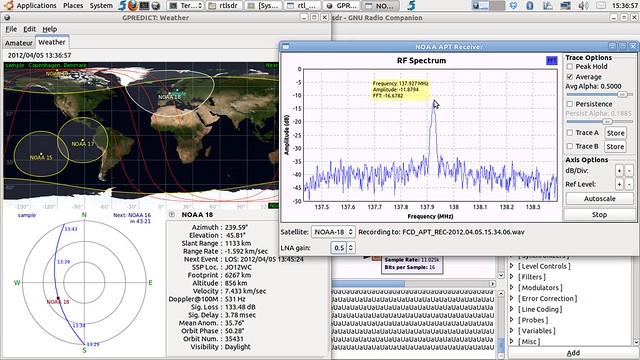Last week I have tested the RTL2832U-based ezcap EzTV666 DVB-T dongle on the air using various VHF signal.
Already Saturday I attempted to receive APT from the NOAA-18 weather satellite. These satellites are always very strong and it was no different using the EzTV666 as you can see on the screenshot below. I was using a handheld ArrowII antenna using an extra adaptor cable, but nothing to match the 50 Ω from the antenna with the 75 Ω in the dongle.
Tuesday I took the RTL2832U SDR dongle with me to the weekly AMSAT meeting at IHK (the Engineering College in Copenhagen). Here we have some better antennas and in particular this one was much better for VHF reception:
The following videos show reception of broadcast FM and narrow band FM in the form of local APRS traffic and slow-scan television. In all cases I used existing GNU Radio flow graphs from the available examples and modified them to use the rtl_source_c from the gr-baz library.
I was using the relative gain feature of hte source, i.e. when the gain is adjusted between 0.0 and 1.0 regardless of dongle type. I found that the transition between too low, optimal and too high gain is not smooth but rather “jumpy” as if there were only these three values to choose from. Moreover, there appears to be some hardware AGC active somewhere, which is very annoying and can in many cases spoil reception.
Update: The gnuradio-companion GRC files used in these tests are available here: https://gist.github.com/2408228

